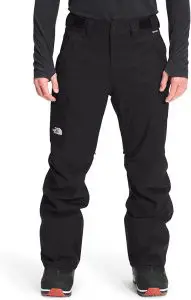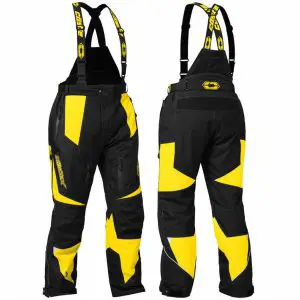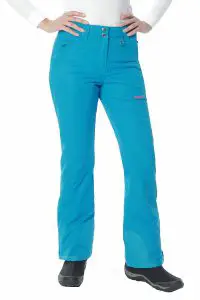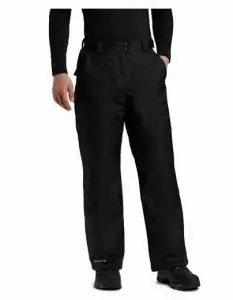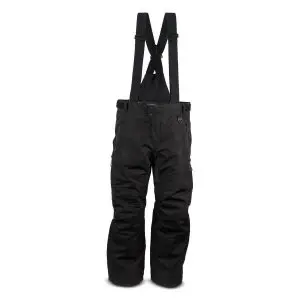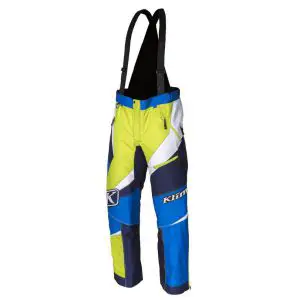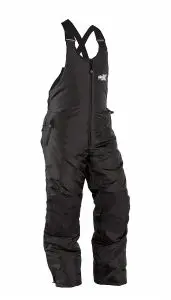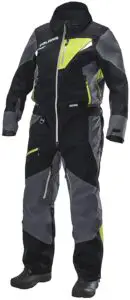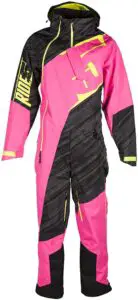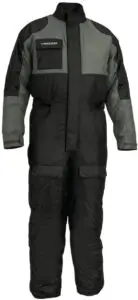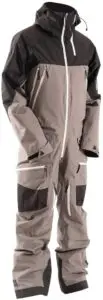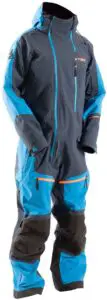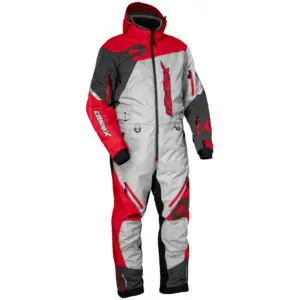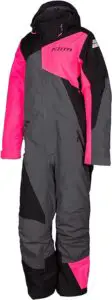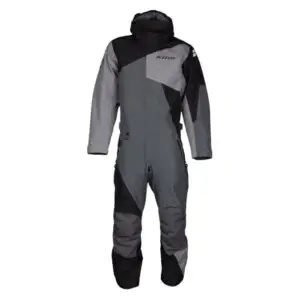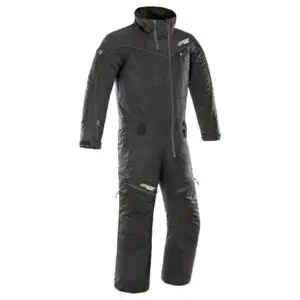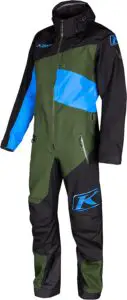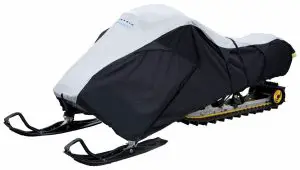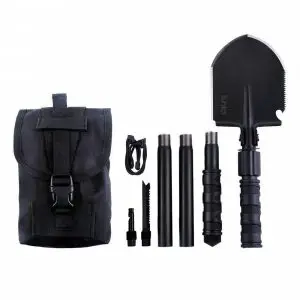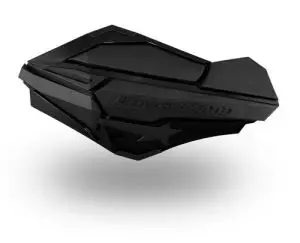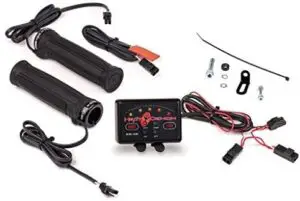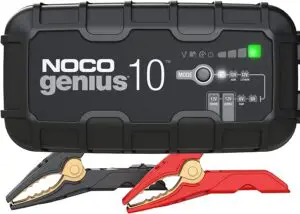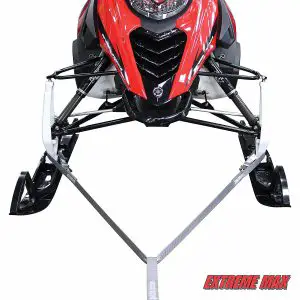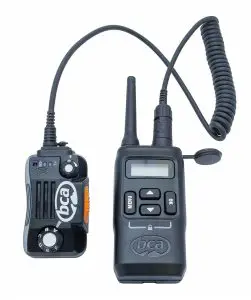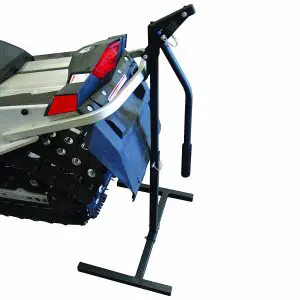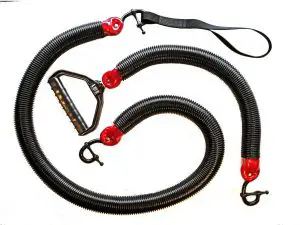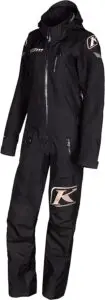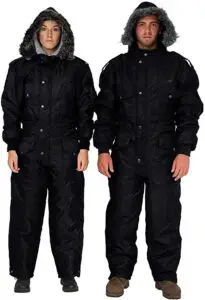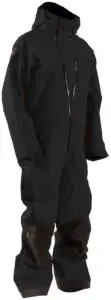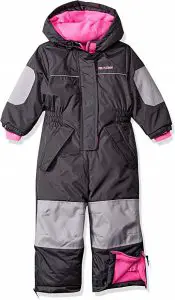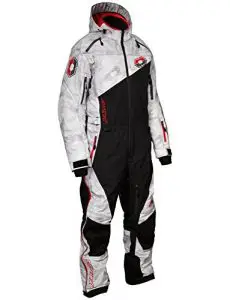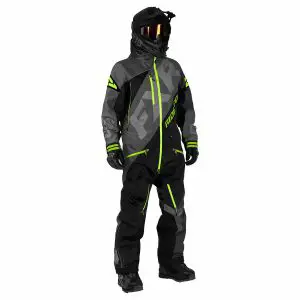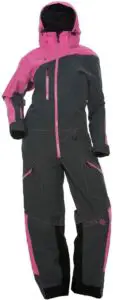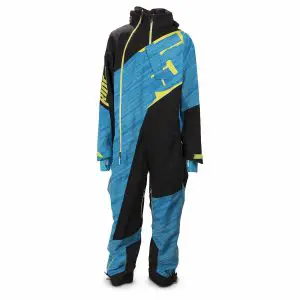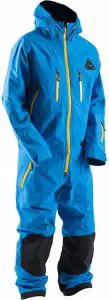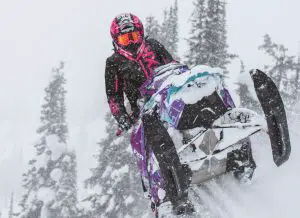Riding a snowmobile is fun and adventurous, but it also means facing low temperatures and frosty winds. Having the right gear and apparel is essential while you are out and about on your snowmobile. Snowmobile pants are an important part of your gear. The right snowmobile pants will protect you from the cold wind created by riding your snowmobile and keep your legs insulated enough to stay warm all day while being breathable enough to prevent sweat. If you are in a rush here are a few of our favorite snowmobile pants:
| Image | Title | Why We Like | Rating | Men's | Women's |
|---|---|---|---|---|---|
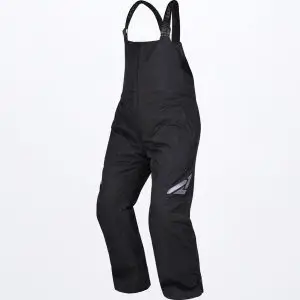 | FXR Fuel Bib Pant | Best Overall Pants |  | Check Price on Amazon | Check Price on Amazon |
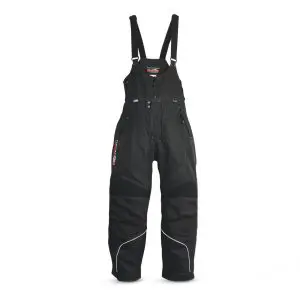 | Arctix Men’s Everglade Pants | Best Value Pants |  | Check Price on Amazon | Check Price on Amazon |
 | Klim Klimate Bib | Best Premium Pants |  | Check Price on Amazon | Check Price on Amazon |
How to Choose the Best Snowmobile Pants?
There is a wide range of snowmobile pants available from manufacturers like Arctix, Castle X, Klim, and Tobe. They have varying fittings, use different fabrics, and are suitable for specific environmental conditions. The best snowmobile pants for one rider may not be ideal for another rider. It will depend on the activities you perform, the level of comfort you require, and the climate conditions in your area. Here are a few things that can assist you in choosing the best snowmobile pants for your snowmobiling adventures.
Fitting and Size
An important thing to consider when choosing the best snowmobile pants is their fitting. Their design must suit the activities you will be engaging in when snowmobiling. They should not be restrictive and facilitate free movement. You should be able to ride comfortably as per your preferred style. One thing to note is that the sizing chart of snowmobile pants varies based on the manufacturer and sometimes the design. When shopping online, ensure that the seller has an exchange and return policy. If you are unsure about the right size, then walk into a retail store and try out the size. You can purchase from the store or order it online if you find a better deal. If you are going to wear inner layers, then you may want to upsize accordingly. The presence of adjustable waist panels, suspenders, and boot gaiters further enhances the fitting.
Waterproofing
Buyers must pay attention to the waterproofing characteristic of snowmobile pants. It will depend on the fabric used for making them. Most riders should avoid cotton as the snow tends to melt and seeps into your clothes as water. Materials like polyester or nylon are waterproof and keep out snow and rain. Snowmobile pants with outer layers of nylon will protect you when it is raining or snowing. Some pants have a synthetic membrane lining for waterproofing.
Breathability
Snowmobile riders, especially those who go on long rides, must consider snowmobile pants with optimum breathability. Waterproof materials like nylon and polyester are good at keeping snow out, but they restrict air circulation. It may cause you to sweat profusely under your clothes, which will be discomforting, and you will feel cold as the sweat dries up. The best snowmobile pants made from waterproof materials ideally have vents with zippers that can be opened to facilitate air circulation. It dries up the sweat and keeps you warm and comfortable.
Insulation
Snowmobile riders who travel in frosty conditions on their sleds may want snowmobile pants with additional insulation. While non-insulated snowmobile pants are ideal for mild to moderately cold climates, freezing weather conditions will necessitate thick insulation. Consider snowmobile pants that come with synthetic insulation, fleece, or both. The colder is the weather in your area, the more insulation you will need. Snowmobile pants designed for functionality generally lack insulation as it somewhat restricts movement. Riders may want to purchase two separate pairs of snowmobile pants, one for riding and the other for tasks.
Durability and Reinforcement
While the durability of snowmobile pants may not matter to occasional riders, it is essential for individuals who ride their sleds regularly. They will wear them daily and will need a pair that can last for years to come. The snowmobile pants should have heavy-duty construction. Their knees should have extra reinforcement along with ankles, hem guards, and scuff for additional durability. Riders who frequent the wild may opt for snowmobile pants with Kevlar protection in leg cuffs, knees, and inner calves for enhancing safety.
10 Best Snowmobile Pants – 2023
Considering the wide range of snowmobile pants available in the market, choosing the right one can be confusing. Here are the ten best snowmobile pants that you can consider for purchase before you head out on your snowmobile. If you are looking for full snowmobile suits please visit our article on the 10 Best Snowmobile Suits.
1. Arctix Men’s Everglade Pants
The Arctix Men’s Everglade Pants are among the best snowmobile pants suitable for sub-zero temperatures. They are crafted from 100% polyester Twill Thermalock fabric and feature 5oz/m2 of ThermaTech insulation for providing warmth in extreme cold. Their water and wind resistant properties keep your dry and comfortable. The pants come with boot gaiters with grippers to prevent heat from escaping. The waist can be adjusted depending on the number of cloth layers worn under. Areas of the pants that are prone to wear and tear, including the ankles and hem guard, are reinforced with 600 Dernier Ballistic nylon. If you are looking for a bib take a look at Arctix Men’s Tundra Bib as well.
2. The North Face Freedom Pant
The North Face Freedom Pant is designed for male riders who are seeking a lightweight and durable snowmobile pants. It has a two-layer waterproof seam-sealed DryVentnylon shell. It is 100% waterproof and windproof and comes with Heatseeker Eco Insulation. It comes with a cargo pocket for easy access as well as inner-thigh vents and reinforced kickpatches and hem. People who have purchased these pants comment that they are very well made and they typically fit exactly as expected. You can expect to get a lot of use out of these pants and you will be able to move freely in them as they are loose enough to move around whether you are just wearing one layer or many layers. The North Face Freedom Pant has a Women’s style as well.
3. Castle X Platform Snowmobile Bib
The Castle X Platform Bib is one of the best snowmobile pants in the value for money segment. Its outer shell is crafted from 600D nylon for uniform quality construction. It along with 150g of Castle ColdShield insulation and DWR coating shields the rider from snow, water and winds. There are hand pockets with zip provided to store any gear or items. Its inner side features snow gaiters that attach to boots and protect feet and legs. The seat and knee panels are pre-curved for an optimal fitting even when sitting on the snowmobile. The length of the Platform Bibs can be adjusted as required. It is available for both men and women.
4. Klim Klimate Bib
The Klim Klimate Pant is one of the best snowmobile pants for extremely cold weather. It boasts of 220g of Thinsulate insulation at the legs and 100g of Thinsulate insulation at the bib along with a two-layer Gore-Tex shell. You are assured of complete protection even in harsh weather conditions. It has a highly breathable design and features full length zips with double headed zippers along the side of the legs for additional ventilation. The fitting is excellent thanks to its elastic back waistband and waist adjustment strap. There are two hand pockets provided along with one thigh pocket for carrying gear and requisites. Glove friendly zippers, belt loops and removable knee pads further enhance its value. People who have purchased these pants love how they fit perfectly and they are comfortable and super warm! Klim also makes a similar Women’s Allure Winter Snowmobile Bib as well if you are looking for an equivalent version for women.
5. Arctix Women’s Insulated Snow Pants
Arctix Women’s Insulated Snow Pants are easily one of the bestselling snowmobile pants for women. The shell of the pants is made from Dobby ThermaLock Fabric and is accompanied by 85g of ThermaTech insulation for maximizing heat retention. It is water and wind resistant and has boot gaiters for protecting legs and feet. The ankles, hem guards, and scuff are reinforced with 600 denier ballistic material for minimizing wear and tear with usage. Its adjustable waist allows the wearer to customize the fit as required. It has pockets with zippers as well as boot zippers for added convenience. The Insulated Snow Pants from Arctix are a great choice for female riders who are looking for an affordable option for riding in cold weather.
6. Columbia Snow Gun Pant
Columbia is a brand that specializes in adventure and outdoor gear. Its Columbian Snow Gun Pant is a great choice for both men and women. The bib has a two-layer shell and 60g of insulation for providing extra warmth to the rider. It comes with an Omni-Tech membrane making it completely waterproof and windproof yet breathable. The knees are reinforced for extra protection and durability. There are large exterior cargo pockets which are more than adequate for carrying all required items. Columbia manufactures the Snow Gun Pant in multiple sizes and colors and it comes in a Men’s Style and a Women’s Style.
7. 509 R-200 Insulated Pant
The 509 R-200 Insulated Pant is one of the favorite snowmobile pants of many riders. They have been designed for snowmobiling by taking into consideration the requirements of the riders. The bibs have been crafted with 509’s patented 5TECH waterproof, breathable, windproof, and water repellent shell, and uses the 300d Cordura® face for long term durability. To ensure heat retention, 509 has insulated the pants with 100 grams of Thinsulate Insulation which is known for its lightweight and compactness. Additional features include 5TECH stretch breathable panels on the inner thigh, full suspenders with a rear yoke (removable if you want), 3/4 leg zips, handwarmer pockets, and boot gators. The 509 R-200 Insulated pant is available in male and female styles. As one of the foremost snowmobile riding clothing companies in the US (and I assume the world) 509 has quite the selection of professional grade snowmobiling gear available in their online store that can found found here.
8. Klim Tomahawk Pant Bib
The Klim Tomahawk pant is designed for riders who love to race on backcountry trails. It has a three-layer Gore-Tex shell that provides complete protection from water and winds. The material ensures optimum breathability while keeping you dry. Riders will find its convertible pant/bib design appealing. It comes with knee pads for added protection though they can be removed if required. The pant has full-length glove-friendly zips on the sides that can be used as vents. A side waist adjustment enables a snug, fit and there are two pockets provided for storing gear. Women riders looking for snowmobile pants can consider the Alpine Bib from Klim.
9. Castle X Fuel G7 Snowmobile Pant
Need a rugged snowmobile pant that protects you from the elements of nature and withstands the test of time? Then the Castle X Fuel G7 Bib will fit your bill. Its shell is made from ultra-tough polyester and nylon to provide maximum durability. It comes with 150g of Thinsulate insulation for providing protection from snow and winds. The Ven-Tex 2.0 laminated construction ensures optimum breathability. The knee panels have padding, and the pre-curved seat is reinforced with 500D Airdura material. Its thighs feature zipper ventilation and the waist is adjustable. It also has the 3M Scotchlite reflective material for ensuring that the rider is easy to spot in low light conditions. Castle X manufactures the Fuel G7 for women also.
10. FXR Fuel Bib Pant
If you are searching for the best snowmobile pants for racing, then the FXR Fuel Bib Pant is a great option for you. It has been designed to protect without compromising on performance. It has a durable nylon/polyester shell along with moisture wicking quick dry mesh lining and 225g of FXR Thermal Flex insulation for exceptional protection even in the harshest conditions. Its seat panel also features FAST lining for providing warmth and enhancing breathability. The suspenders can be adjusted as required. It comes with snaps for closing storm cuffs and retaining boot laces in case the weather turns severe. FXR manufactures the Fuel Bib pants for men and for women.
If you are looking for other snowmobile gear feel free to check out our most popular articles on snowmobiles.org:
